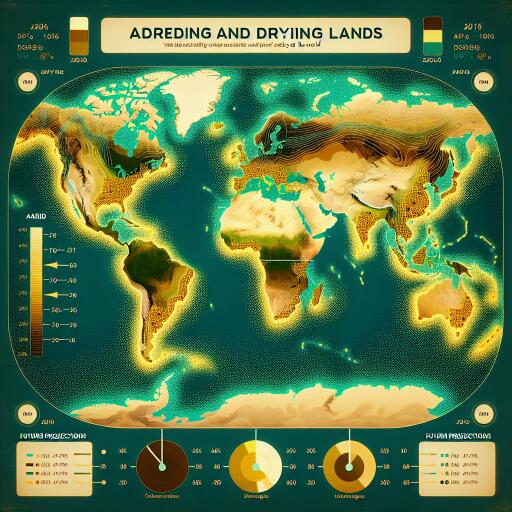
The Global Threat of Drying Lands: A New Era of Aridity
In a revealing new evaluation, UN scientists have alerted the world to a worrying global transformation: a significant percentage of the planet’s landmass has undergone a permanent transition to drier conditions over the last three decades. This trend, documented in a report by the UN Convention to Combat Desertification (UNCCD), emphasizes the critical need for heightened awareness and timely action.
Understanding the Extent
Recent findings indicate that 77.6% of Earth’s land experienced increased dryness from 1990 to 2020 compared to the previous three decades. In conjunction, drylands swelled by an additional 4.3 million km², surpassing an area larger than India — now enveloping 40.6% of our global land surface. This expansion is pressing more regions across critical thresholds of aridity, transforming previously humid landscapes into drylands and posing severe repercussions for agriculture, ecosystems, and human communities.
The Expanding Reach of Drylands
If substantial cuts to greenhouse emissions are not made, an estimated 3% of today’s humid territories risk becoming drylands by century’s end. Areas forecasted to experience extensive dryland expansion include regions in the United States’ Midwest, central Mexico, northern Venezuela, north-eastern Brazil, southeastern Argentina, the Mediterranean, parts of southern Africa, and southern Australia.
An Inescapable Transformation
As articulated by Ibrahim Thiaw, UNCCD Executive Secretary, aridity encapsulates a relentless and irreversible transformation. Unlike short-lived droughts, these persistent drier conditions drastically alter climates, permanently affecting vast landscapes and reshaping life as we know it.
A driving force behind this global aridity shift is climate change, primarily fueled by greenhouse gases from industrial and land use activities. The changing climate affects rainfall, evaporation, and plant processes, creating conditions increasingly conducive to aridity.
Highlighting Aridification Hotspots
Notably, many parts of Europe, sections of the western United States, regions in Brazil, parts of Asia, and central Africa have been particularly affected by this drying trend. In contrast, only a small fraction of global land has experienced moisture gains, with the central United States, parts of Angola, and Southeast Asia observing slight improvements.
The implications are profound: expanding drylands edge ecosystems and societies toward critical impacts, causing food insecurity, economic strain, and lifestyle disruptions.
Consequences for Humanity and Nature
For the 2.3 billion people living in these expanding drylands, this new arid reality demands scalable adaptive solutions. As heat intensifies, projections forewarn that up to 5 billion individuals could inhabit drylands by the end of this century, grappling with depleting resources and faltering ecosystems.
Forced migration is among the most visible consequences, as environmental harshness compels families to relocate, instigating broader socio-political challenges. Regions like the Middle East, Africa, and South Asia already demonstrate these trends, which are expected to escalate.
Adapting to Aridity
The report amplifies the need for innovative, collaborative responses to counteract this drying trend. It emphasizes the importance of weaving indigenous and traditional knowledge with advanced scientific methods to develop robust adaptation strategies.
The report further urges for an enhanced focus on sustainable practices to lessen socioeconomic vulnerabilities, ensuring resilience against the encroaching aridity threat.
A Wake-Up Call
This report is more than just an analysis; it’s a call to action. It demands we address aridity as a crucial global challenge, advocating an extensive coordinated effort across international borders.
Moreover, the findings illuminate how societies must reassess their relationship with land and water, requiring innovative strategies for sustainable development in an increasingly arid world.
The Path Forward
The challenge of tackling expanding aridity is formidable but not insurmountable. It requires a unified vision that integrates cutting-edge technologies, traditional knowledge, and a strong commitment to sustainability. Addressing this issue is necessary not only for the health of our environment but also for the well-being and future of humanity.
As we look forward, the question isn’t about whether the solutions exist. Instead, it’s about whether collective willpower can rise to the occasion — to meet the aridity challenge with effective action and sustainable resilience.





Leave a Reply